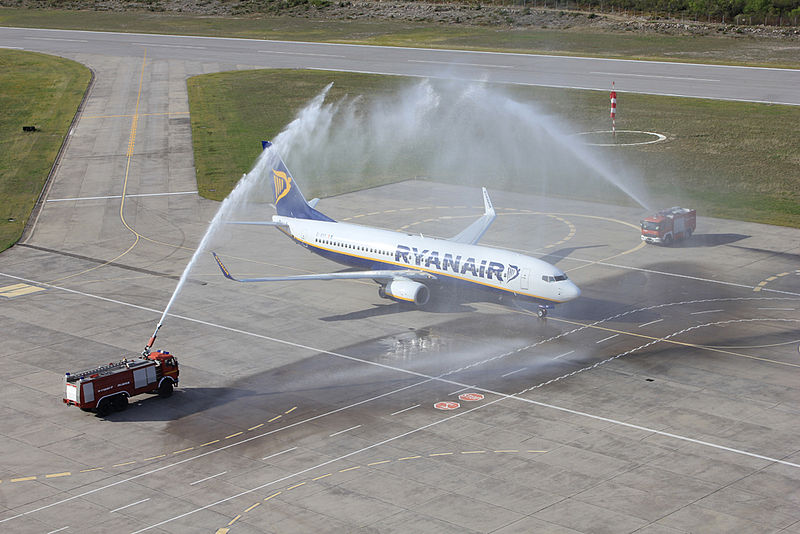You know, the aviation industry is all about efficiency, safety, and streamlining operations. Every procedure is designed with precision, and there’s hardly room for anything that doesn’t serve a clear purpose. That’s what makes the water cannon salute such a delightful contradiction. It doesn’t serve any practical function—no added safety, no fuel-saving hack. It’s just there, a ceremonial splash of water over an aircraft, purely to honor tradition. And personally, I think it’s a beautiful gesture.
The water cannon salute is like aviation’s version of tipping your hat or sending a warm wave of respect. You may have seen it on TV or, if you’ve been lucky, at an airport after a plane makes a particularly special flight. Giant fire trucks line up on the tarmac, arching streams of water over the aircraft as it rolls in, creating an almost regal welcome (or farewell). It’s a moment when time slows down, and we acknowledge something significant, whether it’s a pilot’s final flight, the launch of a new airline route, or the arrival of a distinguished guest.

But where did this tradition come from, you might ask? The roots of the water cannon salute aren’t as clear-cut as you’d expect. Some say it was inspired by naval traditions, where ships would fire water jets or cannons as part of ceremonies. There’s a strong connection between aviation and maritime traditions, especially considering many early airline pioneers were heavily influenced by naval practices. The idea of honoring a vessel or its crew with a grand display of respect found its way into the world of aviation, only instead of cannons, we use water cannons (thankfully, much more gentle!).
The first recorded instances of the salute in aviation date back several decades, though it wasn’t as common or widespread until more recent years. As air travel grew and airlines became more global, the gesture evolved into something airlines and airports could use to mark milestones. The retirement of aircraft, a beloved captain’s final journey, the introduction of new fleets—these moments have all been celebrated with a grand water arc.
For example, when a new airline lands in a city for the first time, it’s common for the local fire department to roll out the big hoses and give the plane a warm water cannon welcome. I’ve even heard of flights carrying Olympic teams or humanitarian missions being honored in the same way. It’s a kind of universal aviation handshake, shared among airlines and airports worldwide.
But here’s the thing—there’s no strict rule that says you have to do it. It’s purely a tradition. And in an industry where every ounce of weight and every minute of delay is scrutinized, I think it’s kind of nice that we still hold on to something that’s more about humanity than efficiency.
At the end of the day, the water cannon salute is a reminder that aviation, for all its complexity and focus on safety, is still deeply connected to people and moments that matter. It’s a celebration of the milestones and memories we make in the sky. And that splash of water, even if it doesn’t serve any functional purpose, adds a touch of heart to an otherwise mechanical world.
There is one record of a water canon salute going wrong, when Saudia SV566 was given a salute to honour Saudi Arabia national day. One of the fire trucks lost control of its spray – it was traced back to a technical malfunction – and after going up, the spray came down and hit the aircraft’s side. And boy, those sprays have some power. An over-wing emergency exit door got dislodged, leading to a deployment of the slide…
Leave a Reply